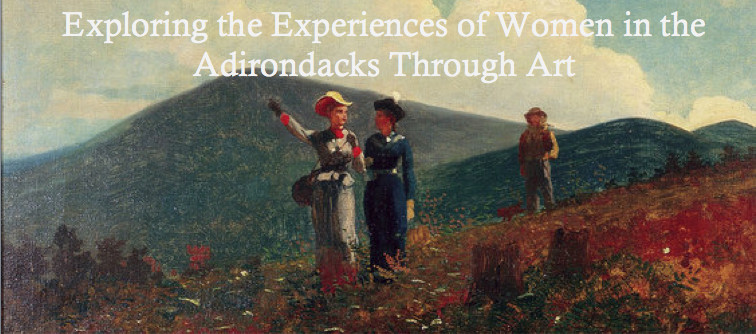
In understanding the experience of women in the Adirondacks through art, it is not only important to view women in art, but also examine art created by women. Art of women created by men has a male bais, while art created by women offers a perspective that is unique to their experiences. By ignoring this rarely exaimned point of view, an important perspective is lost in history.
There are very few female artists associated with the Adirondacks, especially painters in the 19th century. But in the 20th century there were two artists that stood out in the Adirondacks: Edna West Teall and Georgia O’Keeffe. Both women painted prolifically during their time in the Adirondacks, though each with a different purpose. Teall was a folk artist who used her works to tell the story of her childhood growing up in the Adirondacks in the 1880s. She felt deeply connected to the region, especially through the people and their culture, and her works are glimpses of a time that no longer exists. The scenes portrayed in her paintings give the viewee the sense of spying on a well-kept secret.

Contrarily, O’Keeffe focused on the natural world, deeply exploring flowers as well as landscapes, trees, leaves, and apples. Her works are intimate and focused, showing more appreciation for her singular subject, than the region as a whole. This can also be felt through her writings at the time through which she expressed feelings of suffocation and isolation during her summers in the Adirondacks. Both Teall and O’Keeffe give valuable and unique representations of the Adirondacks through their paintings, and when combined, viewers can achieve a more comprehensive understanding of the region.
